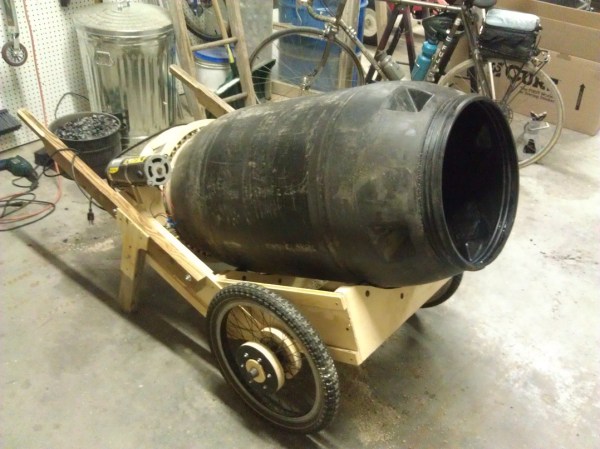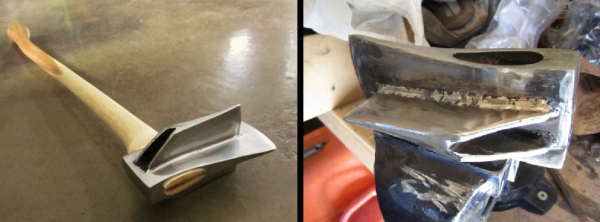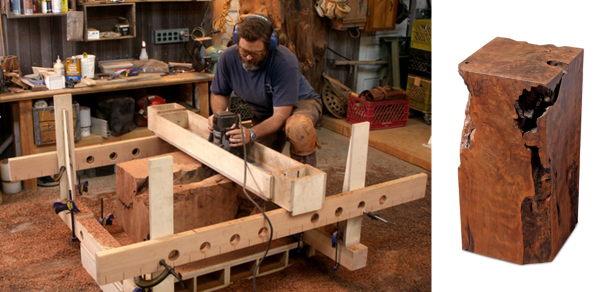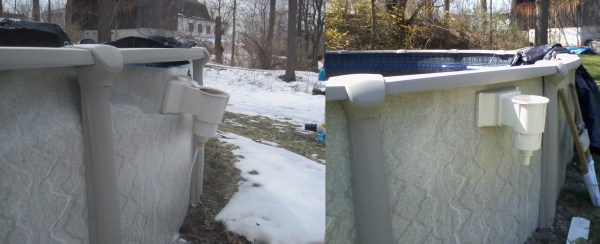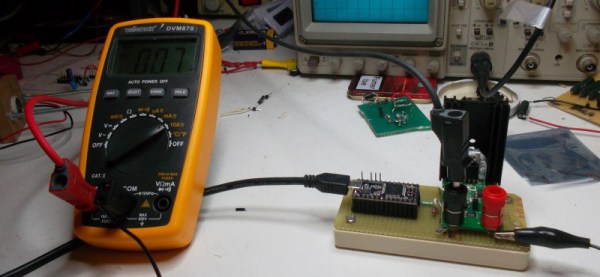[Dan] had a bunch of concrete mixing to do. Sure, it was possible to stand there and mix concrete and water in a wheelbarrow for hours and hours but that sounds like a tedious task. Instead, [Dan] looked around the shop to see if he had parts available to make a concrete mixer. As you may have guessed, he did. Instead of stopping at just a concrete mixer, he decided to make a concrete mixing wheelbarrow!
The frame is built out of plywood left over from a past canoe project. The frame holds a mixing barrel that was also hanging around the shop. From the photo, the drive system looks simple but it is not. First, the small motor pulley spins a larger pulley that is in-line with the barrel. Gearing down the drive this way increases torque available to spin the barrel, and that gear reduction is necessary to spin the heavy concrete slowly. What you can’t see is a planetary gear system that gears down the drive train again. The gears are cut out of plywood and were designed in this Gear Generator program. The sun (center) gear of the planetary setup is supported by another scavenged part, a wheel bearing from a Chevy minivan.
Now [Dan] can mix all the concrete he wants, wheel it over and dump it wherever he needs it. With the exception of the drive belt and some miscellaneous hardware, all the parts were recycled.

